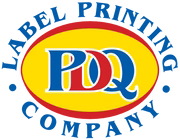
The Unsung Heroes of Medication Safety: Pharmacy Labels Explained
Share
When you pick up a prescription from the pharmacy, you're often focused on the pills inside the bottle — but it's the label on the outside that truly guides safe and effective use. Pharmacy labels may seem simple, but they play a critical role in preventing medication errors, ensuring proper usage, and supporting patient health.
In this blog post, we’ll take a closer look at pharmacy labels — what they include, why they matter, and how they’re evolving to meet the needs of modern healthcare.
What Is a Pharmacy Label?
A pharmacy label is the printed information affixed to a prescription medication container. It includes details about the medication, the patient, and instructions for use. This label is your go-to source for understanding how, when, and why to take your medication.
Key Elements of a Pharmacy Label
Though label formats may vary slightly by region or pharmacy, most include the following key components:
- Patient Information: Full name of the patient the medication is prescribed for.
- Medication Name: Both the brand and generic names, where applicable.
- Dosage Instructions: Clear guidance on how much to take, how often, and for how long.
- Date of Dispensing: When the prescription was filled.
- Prescribing Doctor: The healthcare provider who issued the prescription.
- Pharmacy Contact Info: Name, address, and phone number of the dispensing pharmacy.
- Refill Information: How many refills remain, if any.
- Warnings & Precautions: Cautionary labels or instructions (e.g., “Do not operate heavy machinery,” or “Take with food”).
Why Pharmacy Labels Matter
Pharmacy labels aren’t just administrative details — they’re essential to medication safety. Here's why:
- Preventing Errors: Labels reduce the risk of taking the wrong medication or incorrect dosage.
- Supporting Adherence: Clear instructions help patients stick to their prescribed regimen.
- Avoiding Interactions: Warnings about food, alcohol, or other drugs help avoid dangerous side effects.
- Legal and Compliance Role: Labels ensure pharmacies meet regulatory standards.
The Rise of Patient-Centered Labeling
As healthcare becomes more patient-focused, pharmacies are moving toward simpler, clearer labels. Innovations include:
- Larger Fonts for easier readability.
- Plain Language Instructions (“Take 1 pill in the morning” vs. “Take 1 tablet PO QAM”).
- Color Coding to differentiate medications.
- Bilingual Labels to support non-English-speaking patients.
- QR Codes linking to videos or additional information online.
These improvements aim to reduce confusion and increase safety, especially among older adults or those with limited health literacy.
Best Practices for Patients
To make the most of your pharmacy label:
- Read it thoroughly before taking any medication.
- Ask questions if anything is unclear — pharmacists are there to help.
- Store medications properly, following any special instructions.
- Keep labels intact for reference throughout the treatment period.
Pharmacy labels are a small but mighty tool in the world of healthcare. They ensure that every dose of medicine you take is informed, safe, and effective. So the next time you pick up a prescription, take a moment to appreciate the label — it’s your personal guide to better health.



